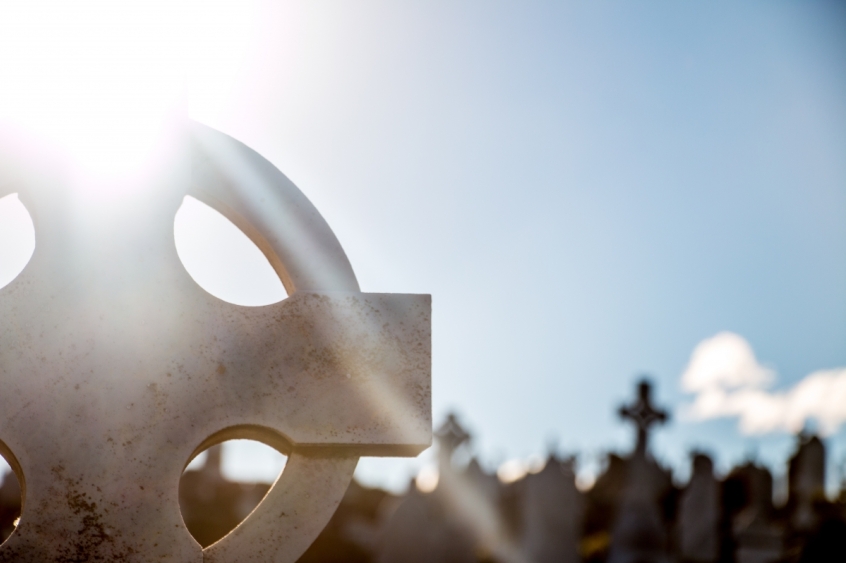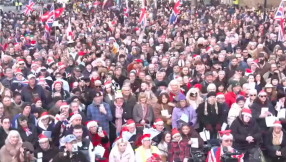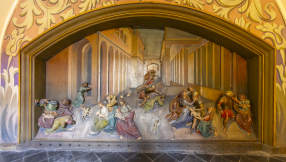
Many people do not believe in the empty tomb of Christ, but the Scriptures provide proof that indeed Christ's tomb was empty.
And it was empty because He rose from the dead.
In this article we'll take a quick look at some of the evidence for the empty tomb of Christ. I am not a Bible scholar, but the Word of God is enough for us.
After all, the whole of Scripture is the Word of God, who never ever lies (see 2 Timothy 3:16-17; Numbers 23:19).
Biblical evidence for the empty tomb of Christ
1) Christ was buried
First, we have evidence of the life of Christ in the Bible. We read in a four Gospels that He lived, suffered, and died on the cross. His death was even prophesied centuries before by a prophet named Isaiah (see Isaiah 53).
John 19:38-41 and Matthew 27:57-61 record the account of Jesus' burial in a tomb belonging to a rich man from Arimathea named Joseph. This man asked the governor, Pilate, for Jesus' body so that he could bury Him.
If Joseph of Arimathea and Pontius Pilate were historically real people at the time, then we're sure that Jesus died and was buried. And if the Biblical accounts are true, then Jesus' burial place was a tomb hewn out of a rock.
This sets the stage for proof number 2.
2) The Pharisees had the tomb guarded
Matthew 27:62-66 tells us that the chief priests and the Pharisees, who hated Jesus and plotted to have Him crucified, went to Pilate with a very important request, one that would probably help them sleep better that night:
To have the tomb guarded, in an attempt to prevent Christ's prophesied resurrection.
Jesus earlier said He would rise from the dead after three days. The chief priests and the pharisees, hating Him and wanting to turn people away from Him (this is why they labeled Him as "that deceiver" in Matt. 27:63), asked Pilate to secure the tomb.
This second item further bolsters the truth that Christ died and was buried. This also sets the stage for the last and most important proof, which is:
3) The soldiers who guarded the tomb were bribed to tell a different story
Matthew 28:1-3 tells us how the tomb was opened:
"Now after the Sabbath, as the first day of the week began to dawn, Mary Magdalene and the other Mary came to see the tomb. And behold, there was a great earthquake; for an angel of the Lord descended from heaven, and came and rolled back the stone from the door, and sat on it. His countenance was like lightning, and his clothing as white as snow."
An angel went down from heaven to roll back the stone that closed the tomb, to open it. If this isn't real, then why does the following verse happen?
"And the guards shook for fear of him, and became like dead men." (Matthew 28:4)
Soldiers are supposed to be of a very tough constitution. They hold weapons and attack others using them. They don't faint at the sight of blood or dead bodies, and they don't fear fighting in wars either.
But in this case, they fainted at the sight of an angel who opened the tomb.
This same angel spoke to Mary Magdalene and the other Mary,
"Do not be afraid, for I know that you seek Jesus who was crucified. He is not here; for He is risen, as He said. Come, see the place where the Lord lay." (see Matthew 28:5-6)
As the women went out to tell the other disciples of what they had seen, Jesus Himself appeared to them (see Matthew 28:9-10). What a wonderful sight! John 20:16-18 even gives us details regarding Jesus' interaction with Mary Magdalene.
Now, what happened to the soldiers who fainted at the sight of the angel and the open tomb?
The chief priests, who hated Jesus, bribed them and instructed them to spread a lie.
"Now while [Mary Magdalene and the other Mary] were going, behold, some of the guard came into the city and reported to the chief priests all the things that had happened. When they had assembled with the elders and consulted together, they gave a large sum of money to the soldiers, saying, "Tell them, 'His disciples came at night and stole Him away while we slept.' And if this comes to the governor's ears, we will appease him and make you secure." So they took the money and did as they were instructed; and this saying is commonly reported among the Jews until this day." (Matthew 28:11-15)
In this scenario, the chief priests did not deny the resurrection of Christ. They didn't deny the report of the soldiers who saw an angel opening the tomb. They did not reject their report. They merely covered it with a lie.
In closing
And so, dear friends, we see that Christ's tomb was indeed empty on the third day.
Many witnesses attest to His death. A few persons of interest (Joseph of Arimathea, Pontius Pilate, the chief priests and the Pharisees) attest to His burial. Some women and soldiers attest to His tomb being opened and empty on the third day.
If this was some made up story, how could it be the foundation of a faith that continues to flourish in the face of continued persecution and suppression, even passing the test of time?













